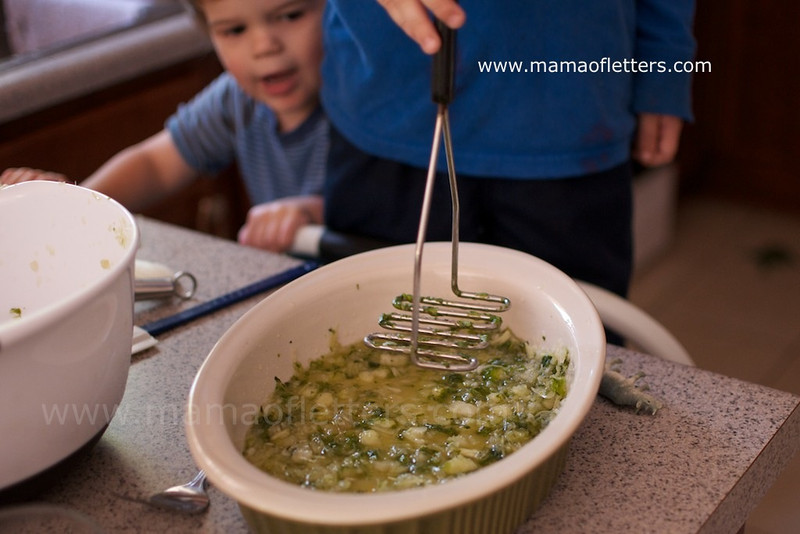At Home with the Editors: Shelli’s Project-based Homeschool
When Amy approached me about working on home / school / life, we both agreed that we wanted a magazine and website that would welcome all homeschoolers no matter what their style or reasons for homeschooling. We continue to strive to bring you a variety of resources that will inspire you as you consider what is best for your family. Because we know most homeschoolers enjoy sharing the resources and insights they have learned through homeschooling, we thought we would start a series on our blog about our own homeschools. If nothing else, you will get a behind-the-scenes look in the homes of the editors of home / school / life, but if something here helps you, all the better!
This is my second post about our homeschool. In my first one, I listed all the curriculum and resources I use for the more formal part of my sons’ homeschool. Monday-Thursday we spend about two hours on our “lessons,” and on Fridays, we do an art lesson. But after our formal lessons, or on a day that I dedicate to it, I make myself available for what to me is the most important part of my son’s education – his own projects. These are projects that are completely initiated and controlled by him. I consider them important because it’s through these projects (or interests) that he is learning how to learn, how to do research, how to make decisions, what to spend his time on, learning what he’s really passionate about, and he is developing his imagination and problem-solving skills.
So what is project-based homeschooling, and how do I do it? I wrote the definition that you will find in home/school/life magazine’s Toolkit, the magazine’s guide for beginning homeschoolers (we define eleven of the most popular methods of homeschooling), so I will include that here:
Project-Based homeschooling (PBH) is inspired by the Reggio Emilia Approach, and the term was coined by Lori Pickert. It is a method in which parents become mentors to their children in order to help the child direct and manage his/her own learning. Children may undertake long-term projects and will be given the time and tools that allow them to dig deep into their interests. PBH can be used in conjunction with any curriculum or style of homeschooling, from classical to unschooling.
But it’s much more than that too, and it’s not easy to explain how I do PBH in a blog post, so instead I’ll give you a few snapshots of what my son has accomplished while I have used these techniques. Though, in many ways, I was already following his interests and creating an environment where questions, creating, and discovering were encouraged, I am thankful for the tips I’ve received by following PBH. I’m not sure I would have mentored him as well without them. So I’ll try to explain some of what I’ve learned during this process as well.
When my eight-year-old was five, I learned to take one of his crazy ideas seriously. That is, an idea that didn’t seem educational at first and an idea that was going to be time-consuming, messy, and wasteful too. Instead of giving a quick, “that won’t work,” or “but you’ll need to do this to get to that work,” or “we don’t have time,” or “that would make too much of a mess,” I just let him do what he wanted and see for himself how it would turn out. This was his attempt to a make a Celery Lettuce Cake. (He learned for himself that it didn’t make a very palatable dish, but oh the fun he had! He took it so seriously, and I was happy with his effort.)
When my son was interested in the Titanic, I began to understand how to let him lead a project and how letting him make mistakes was important to this process. It also taught me how a well-placed suggestion can be golden. This project even proved to me that enduring temper tantrums was worth it because in the end he had a product that was completely his own, and he was so proud of it! (Yes, I helped him make it, but he was the designer and director, telling me what to do. I only made suggestions when he was completely stumped and looked at me for help.)
When my son wanted to make a model of the Apollo Saturn V, I learned more how to balance that “let him lead” with “help him when absolutely necessary.” But more importantly, I was able to see how important it is to show my son examples of other people working on projects, failing, and trying again. (This has helped those temper tantrums!) Watching the documentary When We Left Earth, which is about the NASA missions, was perfect for this.
When my son was very interested in carnivorous plants, I had the opportunity to model to my son how we could seek out other experts to learn from. I also learned how some projects will peak but then stay in the background over years because my son is still interested in the plants, and he still grows them, although he doesn’t actively seek to learn more about them right now. But whenever we see them in a documentary or find a live one, we get very excited!
Some projects are short, others are long, and others meander like winding rivers, popping up here and there. I have learned to connect the dots in my son’s projects (journaling helps with this), and I’ve learned that his deep interests include nature, science, and building things….
Looking back, I also see how important it has been to create an environment where materials for creating and building were readily available to my son. It’s also been important for me to show him how to use these materials, say “yes” a lot, and not worry about the messes. We began making paper animals together when he was four, and slowly, I have seen that my son is a true builder and maker – someone who likes working with his hands.
Because I’ve let him use a variety of mediums, I have been able to see what he has a true interest in because these are things he continues to go back to and ask for more. One of these has been working with clay—to the point where he has taken pottery classes at a nearby studio. And also building lots of structures with cardboard, including a model of the Mayflower, a big robot, and two Star Wars ships.
Each of these building projects, such as that awesome Mayflower ship, could have been a different kind of project. We did learn about the Mayflower, read a book about it, but it wasn’t the history my son had a deep interest in. As he continued on to make airplanes, boats and other things, I see he’s a builder and a designer. Even his special interest in Star Wars, I think, is largely due to his deeper interest in the models created in making the special effects and the robots used in those movies.
So it was not surprising that as soon as he learned what robots are, he became interested in that, and now he has a robotics kit. He’s teaching himself computer programming too. (I haven’t written about that yet, but you can see the photo at the top.) I have also noticed how he has watched NOVA’s Making Things Wilder at least four times so far. It, coincidentally, combines all his deep interests. (It’s about bioengineering.) The first time he watched it, he leaned forward in his chair, and said loudly, “I want to do that!”
My five-year-old also has interests, and I’ve been seeing him work through a few projects of his own, though they meander and they aren’t as likely to produce something solid I can show the world like his older brother’s creations. He has been interested in dinosaurs for a very long time, and we have read countless books, watched many documentaries, visited museums, and he plays with his toy dinosaurs frequently, making a sort of “dinosaur land.” (So don't worry if your child isn't into building, art, or tinkering. Projects are simply a long-term investigation into an interest, and what your child produces could take on many forms.)
I also do a lot of modeling for my younger son because it seems to be the best way to encourage him in his interests right now. For example, he loves to draw, so I started my own sketchbook habit, and whenever I pull out my sketchbook, I usually inspire him to do the same.
I have learned with both my boys that the best way to get them to do something is to just start doing it myself! Having my own interests, learning about things that I’ve always wanted to learn about, and casually sharing my own process of exploration with them, is one of the best ways to mentor without pushing an agenda on them. Even if they don't have the same interests, they are learning my behavior and investigation techniques.
I have also learned that it is okay to require certain work from them that I dictate (whether cleaning the house or doing a math lesson), but when it comes to their own projects, I should let them be in charge, and sometimes that means letting them quit before something is completed. I remind them of their work, encourage them, but if I ultimately want them to be in charge of their education, they have to take ownership. So I have learned to take away my own expectations of my children and let them blossom in their own time and through their own discoveries.
Are you interested in learning more about project-based homeschooling? I am always accessible to anyone who would like to discuss homeschooling or who has any questions. Just email me. If you want to talk on the phone, we can set up an appointment. (FYI: My advice is free! I love chatting!) Also, here are a few links for you:
- You will want to read the book What Is Project-Based Homeschooling? by Lori Pickert, see her fabulous website, and join one of her forums. She is also very accessible through her social media, forums and even email, and she offers classes too.
- I have written extensively about this journey with PBH on my blog, and I will continue to do so. See my page Project-based Homeschooling. There is also a very good interview with Lori on my site about beginning PBH with younger children. Click here for part 1 of that.














SHELLI BOND PABIS is home | school | life magazine’s senior editor. She writes about her family’s homeschooling journey at www.mamaofletters.com.